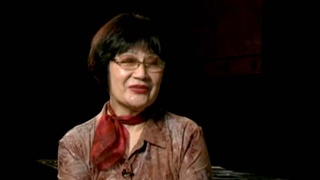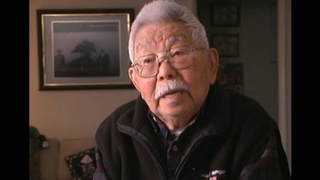Interviews
From Japan to Argentina (Japanese)
(Japanese) My uncle was already living over here, in Rosario. All of my people from Hirara felt that [if we were to migrate] it would be Argentina, because my uncle had been successful over here. He became successful, came back home [to Okinawa], and bought four houses in Naha City—he bought four houses in the center of Naha, and lived quite a wealthy life. It was 1934—we left the port of Naha for Kobe, and I believe we stayed there for one night. We took the “Rio de Janeiro-maru” (name of the boat), and when it made a stop in Brazil, they loaded up a whole bunch of bananas. There were four… no, eleven people, including my aunt, who came on board from Santos. We all took the same boat from Santos, passed by Montevideo, and arrived in Buenos Aires. Everybody came like that. We got off in Argentina. Some who went before us got off in Brazil, and later moved over [to Argentina], too. It took 45 days. We all came, just like that.
Date: November 28, 2006
Location: Buenos Aires, Argentina
Interviewer: Takeshi Nishimura, Ricardo Hokama
Contributed by: Centro Nikkei Argentino
Explore More Videos

Moving to and living in Japan
Japanese American Creative designer living in Japan


Family interrelations between mother and father
(1926 - 2012) Scholar and professor of anthropology. Leader in the establishment of ethnic studies as an academic discipline

Going back to Hawaii
An expert researcher and scholar on Japanese immigrant clothing.

Picture brides and karifufu
An expert researcher and scholar on Japanese immigrant clothing.

Kibei schoolchildren in Hiroshima, Japan
(b.1913) Kibei from California who served in the MIS with Merrill’s Marauders during WWII.

Mother's immigration to U.S. as a treaty merchant
(b. 1927) Japanese American Nisei. Family voluntarily returned to Japan during WWII.

Chose to go back to Japan
(b.1924) Japanese Canadian Nisei. Interpreter for British Army in Japan after WWII. Active in Japanese Canadian community

Coming to America
(b.1943) Shin-issei grand master of taiko; founded San Francisco Taiko Dojo in 1968.

The reason for coming to Japan
(b. 1967) Hawai`i-born professional fighter in Japan

Treatment of Japanese Paraguayans during World War II (Spanish)
Nisei Paraguayan, Researcher

Reason to come back to Canada in 1954
(b. 1922) Canadian Nisei who was unable to return to Canada from Japan until 1952

Nikkei means fusion (Spanish)
(b. 1969) Former president of Centro Nikkei Argentino.

Avoiding the Japanese military
(1914-2004) Nisei Bonsai master in the United States

Tango makes him to stay in Argentina (Spanish)
(1925-2014) La Plata Hochi, Journalist
